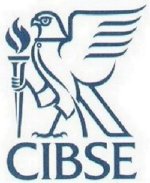Building Services Engineering Heritage Group
A historic snapshot of Broadcasting House
Portland Square London at present being
completely refurbished.
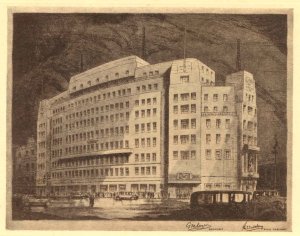 Broadcasting House, Portland Place London, 1931 The challenge was to combine 22 radio
broadcast studios, which had to be acoustically isolated and air
conditioned, with administrative offices enjoying maximum natural
daylighting. The architect, Val G Myers, solved this problem by placing
the studios in an inner core, surrounded by an outer shell of offices.
The air conditioning was designed and
installed by Carrier Engineering Company Ltd. The studios were served
by four air handling plants with chilled water spray-type washers and
steam reheat coils. Refrigeration was provided by a 200 TR centrifugal
water chiller.
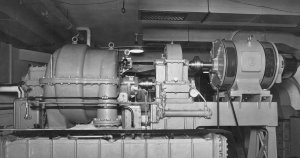 |
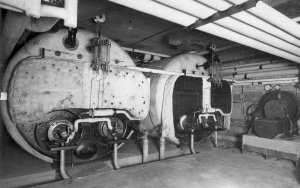 The steam raising equipment consisted of two 6700 lb/hr oil-fired return tube boilers. A contemporary description of the installation reads: “There are 32 fans handling 614 tons of air per hour, 16 pumps delivering 641 tons of water per hour under pressure, 54 electric motors having a combined capacity of 504 hp, sheet steel ducting weighing 120 tons, and 60 independent automatic controls.” 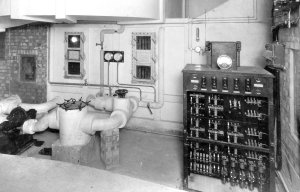 The services are described in “An Air Conditioning Achievement by Carrier,” brochure of Carrier Engineering Co Ltd, London, c.1931. |
page 1
ERDDIG HALL WREXHAM WALES
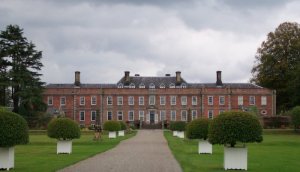 Last year Mike Barber knowing about the Editors great interest in all things to do with the old firm of Haden when they operated from Trowbridge, mentioned that he recalled seeing a Haden warm air stove when visiting this National Trust property many years ago. So a visit was arranged with NT last November and what a treasure trove of engineering history they found there. The
house
which has had many improvements and additions, was originally
built between 1684 and 1687. The Yorke family inherited the house
and estate in 1733 and made their own improvements to the property.
In 1826 Thomas Hopper the Architect placed an order with G&J Haden of Trowbridge for the erection of a warm air stove at Erddig to heat the Ground floor rooms in the South Wing. 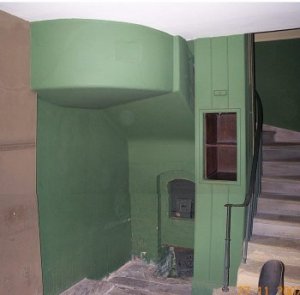 G & J Haden Warm Air Stove 1826 In
one of the covered outbuildings the rusting remains of a Musgrave warm
air stove was found, obviously removed during one of the previous
owners building alterations. Musgrave warm air stoves still existing in
any condition, are very rare engineering items to discover.
|
The
Editors
research in the Haden archive held at the Wiltshire Record Office,
found
the order for the stove to be dated the 16th August 1826.The stove
is
number 94 made by the firm G&J Haden.
When it is known that brothers George and James Haden set up their firm in 1816, this stove must rate as the earliest known example of a Haden warm air stove still existing in its original building. 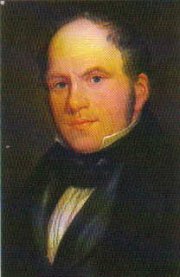
It is
most probable that James Haden himself carried out the
installation. How the heavy cast iron stove was transported in the
pre-railways era would be interesting to know. Maybe using the canals.
Other engineering equipment at Erddig was to be seen in the Workshop, which dates from around 1860. A Cornish type steam boiler and vertical steam engine provided the motive power to drive the various items of machinery. 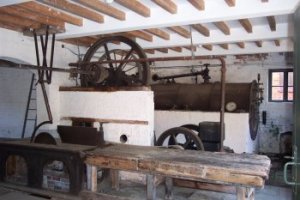 |
page 2
MORE DISCOVERIES ON CHURCH HEATING
MORE DISCOVERIES ON CHURCH HEATING
The Heritage Group’s ongoing project is to seek out and discover Churches and other historic buildings from the Victorian and Edwardian period, which still retain examples of early heating and ventilating equipment or memorabilia. Shown below are more of the items discovered.
| Cast
iron ventilating radiator in St
Andrews Church Ipplepen
Devon
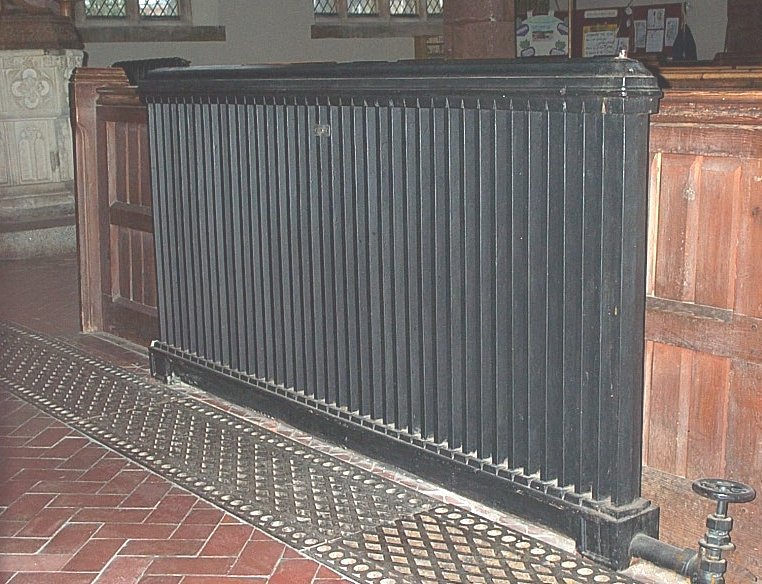 Cast iron S&S valve with Crispin
Bristol inscription in St John’s
Church Bristol
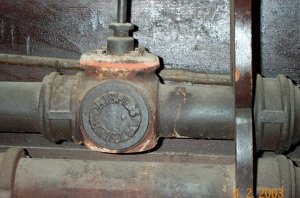 |
Cast iron ‘ Sunbeam’ radiator by Longdon
in All Saints Church Brixham Devon
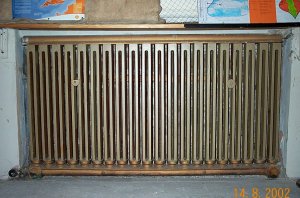 An item of cast iron heating pipeline
equipment
with operating handle ( of unknown purpose) in Lacock Abbey Wiltshire 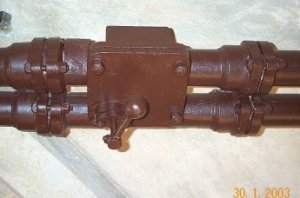
|
TODMORDEN TRIVIA
The Town Hall at Todmorden, built 1860-75, was at
the time in Lancashire. The hot water heating was due to Wilson
Weatherley Phipson. In 1888 the town was placed, for administrative
purposes, in the West Riding of Yorkshire and in 1974 in West
Yorkshire. The traditional county boundary between Lancashire and
Yorkshire at this point is the River Calder which flows in a culvert
under the centre of the Town Hall. Since no legislation has ever been
introduced to change county boundaries, the Town Hall remains in both
counties. Thus the original Phipson heating system (and its ghost) may
be unique in being in two places at once.
page 3
| The
Heritage Group reaches the 30th anniversary of its foundation this year
and plans to celebrate this anniversary with the issue of a special
Newsletter later in the year. |
Also in March at the
invitation of Haden Young, HG member John Barnes gave a
talk in Trowbridge titled ‘Haden’s of Trowbridge’ to the West Wilts
Industrial Archaeology Society. |
|
The HG held their February meeting and AGM
by
kind invitation of The National Trust at their London head office in
Queens
Anne Gate. Following the meeting HG members were given a presentation
by
NT showing their Country Houses Technology Survey, and also an update
of
current developments to the NT website database.
Recent research at the Battersea Record
Office
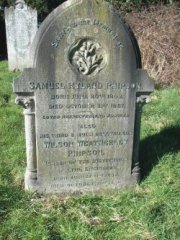 found that Wilson
Phipson’s
father Samuel was buried in the Putney cemetery. When Richard
Forster visited the cemetery he was able to photograph the family
gravestone which was also found to be the last resting place of Wilson
Phipson. All the HG needs to do now is to find that elusive
likeness of Wilson Phipson. found that Wilson
Phipson’s
father Samuel was buried in the Putney cemetery. When Richard
Forster visited the cemetery he was able to photograph the family
gravestone which was also found to be the last resting place of Wilson
Phipson. All the HG needs to do now is to find that elusive
likeness of Wilson Phipson. HG members have been busy in 2003 giving
presentations to several CIBSE Regions. In March, Mike Barber and Frank
Ferris gave a co-presentation to the South Wales region, for the first
time using
the two new Power Point Presentations prepared by the HG. The first
showing recent discoveries made by the Group, and the second showing
the historical engineering services at the Mechanical Technical
Institute in Belfast.
|
John Barnes is also making arrangements for
two manhole covers both bearing Haden inscriptions that were made
at the Haden foundry in Trowbridge (which closed in1910) to be removed
and given, one to the Trowbridge Museum Haden exhibit and the other to
Haden Young.
The HG are proud of the discoveries they
have
made which help Engineers to know and understand about the history of
our
engineering industry, its creation and the pioneering people who made
it
happen, A major aim of the HG is to make this information available to
a
greater audience.
A few examples of the HG’s recent discoveries. 1. The forgotten heating engineer Wilson Weatherley Phipson 1838 – 1891. 2. Steam engines that are still providing the motive power for ventilation fans. 3. Perkins Victorian heating systems, some still complete with their brickwork furnace heating the original building. 4. Haden Warm Air Stoves dating back to 1826. Following the removal and disposal last year
of the Victorian Perkins heating system in Northaw Parish
Church, NADFAS has asked the HG to write an article for the next
issue of their Magazine describing the Perkins heating system and
its history. This will enable all NADFAS Recorders to be able to
identify any Perkins systems found in the Churches that they are
currently recording.
A Heritage Picture Gallery has recently been added to the HG website. Visit the site and enjoy the pictorial history of our industry. |
page 4

